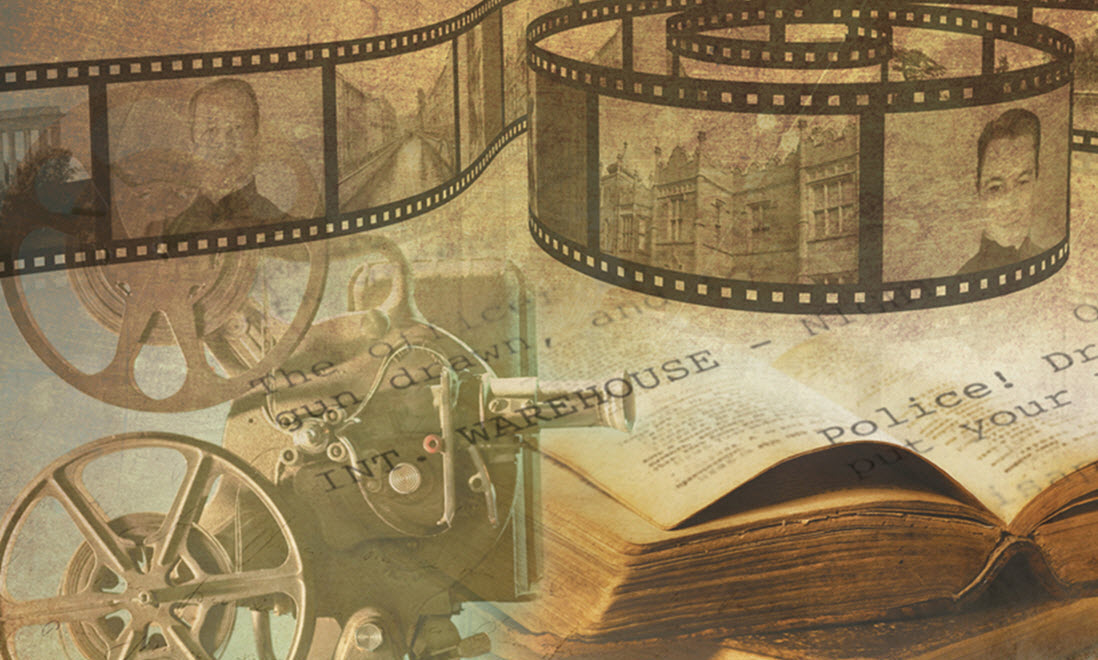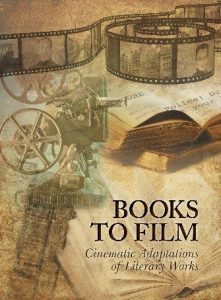| By Elizabeth Ferguson |
In today’s rush to produce more and more content for the silver screen, there is no shortage of cinematic adaptations of literary works. This concept and process is not new, however—directors and screenwriters have long been retelling beloved classics in feature-film format. Take, for example, Francis Ford Coppola’s adaptation of Dracula. Or François Truffaut’s take on Ray Bradbury’s Fahrenheit 451 and James Whale’s version of Frankenstein. Even current works, such as the Harry Potter and Hunger Games series, have found immense success in the film world. Books to Film: Cinematic Adaptations of Literary Works, a new annual series offered on Gale’s GVRL eBook platform, explores the vast world of film adaptation. Entries discuss basic plot summaries of featured books and films; examine critical reaction to each adaptation at the time of their respective releases; provide biographical information on authors, directors, and screenwriters; and explore the process by which the book is transformed into a film. Adaptations covered range “from the silent period (1895–1927) through to contemporary cinema, from studios major and minor as well as independents, from Hollywood and around the globe” as Editor in Chief Barry Keith Grant writes in his introduction to Volume 1. Literary works covered include fiction and nonfiction, canonical works and bestsellers, classic and contemporary works, and long and short writing.
Books to Film is designed to meet the needs of university students, high school students, film or literature teachers as well as general readers. Readers will discover major facts about film history, clear explanations of the main lines of scholarly interpretation, and guidance through important scholarly controversies. The essays within each volume are written by scholars and critics from multiple disciplines who have read, watched, and researched the stories and films that they analyze from a critical perspective. The entries are chock-full of interesting and little-known facts about the people involved in creating the stories, behind-the-scenes events and activity, and the issues some adaptations faced in production. For instance, did you know that Peter Pan was supposed to be Disney’s third feature film, scheduled for release in 1940? Due to complications in production, though, and the intervention of World War II, it wasn’t released until 1953 with 11 other Disney animations preceding it! Did you know that Harper Lee based a character in To Kill a Mockingbird on her childhood friend Truman Capote, or that director Ken Russell was a touring ballet dancer and freelance photographer before he turned to filmmaking? Through Books to Film, readers will discover how much more there is to know about their favorite stories, authors, directors, and films.
Film adaptation of literary works have been a part of the movie industry since its beginnings, and there is no sign of it stopping. Recent releases of film adaptations such as The Circle, based on Dave Eggers’s 2013 novel; Ghost in the Shell, based on a Japanese manga series; and Valerian and the City of a Thousand Planets, a French comic book series, as well as an upcoming adaptation of Agatha Christie’s Murder on the Orient Express show that the trend is still in full force. While the majority of the entries in Books to Film focus on American literature and film, the series does offer readers current and relevant criticism of literature from around the globe and the re-envisioning of these selected works into feature-length films. The first volume is now available for purchase with more volumes to follow!
Interested in adding this series to your library collection? Contact us!
Not a subscriber to Gale eBook on GVRL? Request a trial today.
About the Author
Elizabeth Ferguson began her career at Gale in 2015 as an Associate Development Editor. She is now a Content Developer on the Academic Frontlist & Literature team, working on the Books to Film series and lending support to other ongoing projects.


